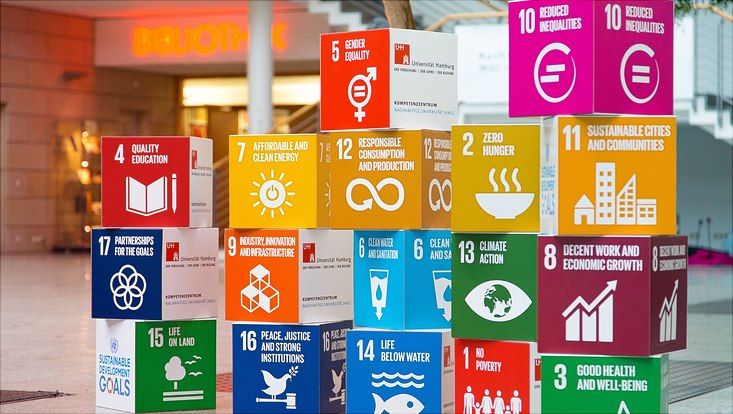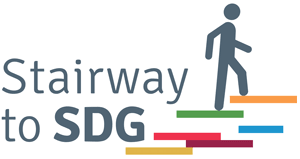Introduction

SDG blocks
There are three points that make the SDGs a comprehensive and inclusive proposal:
→ Universality: all countries face the challenge of eradicating extreme poverty and achieving a sustainable future. The SDGs do not just apply to developing countries, but they are universal.
→ Transversality: the SDGs encompass the three dimensions of sustainable development (th economic, social, and environmental), taking into consideration people, the planet, peace, prosperity and alliances.
→ Indivisibility: there is no SDG more important than another, and this means that no goal will be considered met unless it is achieved globally. Thus, the needs and interests of the furthest behind come first. We live in a world that is more innovative, more connected, and grows faster than ever. Global challenges, such as poverty, inequality and climate change can be resolved only by working together: the SDGs provide the context and a vision of the future to make it happen.
Learning Objectives
- Systems thinking competency
- Anticipatory competency
- Normative competency
- Strategic competency
- Collaboration competency
- Critical thinking competency
Instructions
Step 1) Connecting the SDGs (15 minutes)
The teacher projects a picture connected to one of the SDGs on the digital whiteboard (or, alternatively, shows the printed picture). Your can find some pictures in "Resources".
The students stand in a circle.
The teacher throws a ball of string (or a long rope) and a question: Which SDG is related to this picture?
The student who catches it says the SDG that he/she thinks is related to the picture. Next, the student has to think about an action he/she will undertake in the future to continue to contribute to this SDG. (E.g. : SDG 4. I promise to volunteer in school support programmes in the city).
The first student holds the string and throws the ball to another student, who preferably is not sat by his/her side, and asks: What other SDG do you relate to my action?
The game ends when all the students hold a piece of string and have said an action. The result will be a spider’s web made of string across the circle that represents the interconnectedness between the SDGs.
Pinterest, by Carmesierra
This dynamic is a useful tool to reflect and see how all the SDgs are related, how making progress towards one of them also means progress towards other SDGs, and that with the help of all we can build a more sustainable, planet-and-people-friendly society.
Step 2 ) The barometer of the sustainability (10-15 minutes in class + homework)
Before testing the knowledge acquired on the SDGs, the students answer the questions of the APP individually:
https://www.stairwaytosdg.eu/about-app
Students have to answer a series of questions relating to the SDGs, consumer habits, and life-style. Through this APP the students can realize if their life is more or less sustainable in relation to the 2030 Agenda.
As regarding the number of questions, it is advised that the activity starts in the classroom and is completed at home on an individual basis. It is better to indicate a time frame for completing it (a week, 10 days,...).
Step 3) Reflecting with the SDGs (20 minutes)
After answering the questions of the APP, the teacher together with the students will open a reflection according to the result obtained. You start by talking about the experience at the individual level. Did your score change with respect to the first time you used the APP? If yes, what are the major changes in your habits? Was it easy to change? If yes, why was it easy? If no, why was it difficult? To which SDG did you contribute with your new habits?
Then, it is advised to widen the focus of the reflection. The teacher can ask to the students: Have your knowledge acquired on the SDGs generated some changes at the family, social, and local level? Which ones? Why? What would you highlight from this experience with the Stairway to SDG programme? Would you like to continue to contribute to the achievement of the 2030 Agenda outside the education centre? How? To what do you commit yourself? And at the profesional level, what have been the kind of learning that may help you to be a "sustainable worker"?
Eventually, the teacher will pass a link for the students to shortly answer anonymously to some evaluation questions regarding the experienced gained. You can find the link in "Resources".
Resources
Click each section below to see all resources available.
Resources
Click each section below to see all resources available.
Notes for Educators
Estimated total duration: 50 minutes + homework
- Step 1) If the net gets stuck and the students do not know how to connect the SDGs...no problem. You can use another picture in order to make the dynamc start again.
- Step 2) Shortage of time? You can modify the activity and tell the students to answer only to those questions regarding the SDG that was most worked and developed in the classroom.






